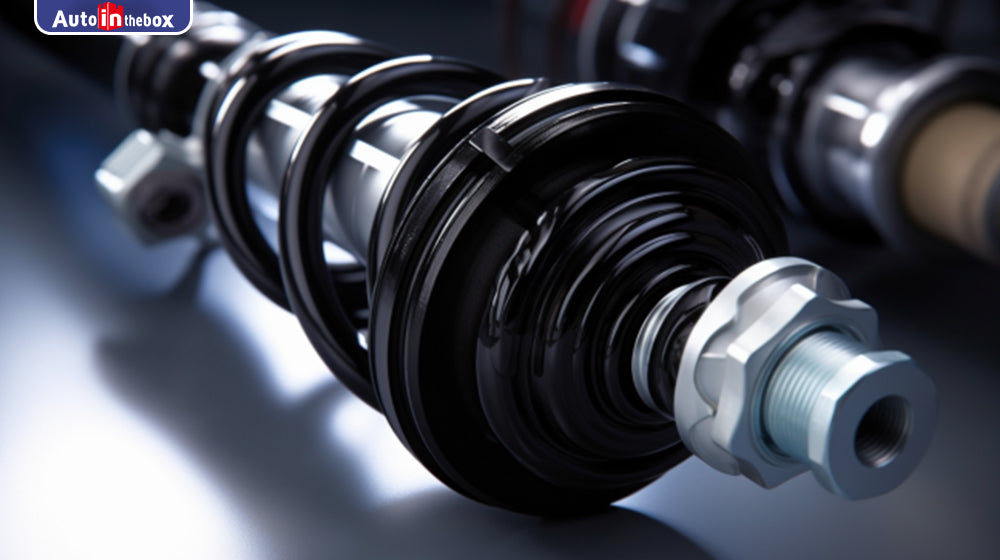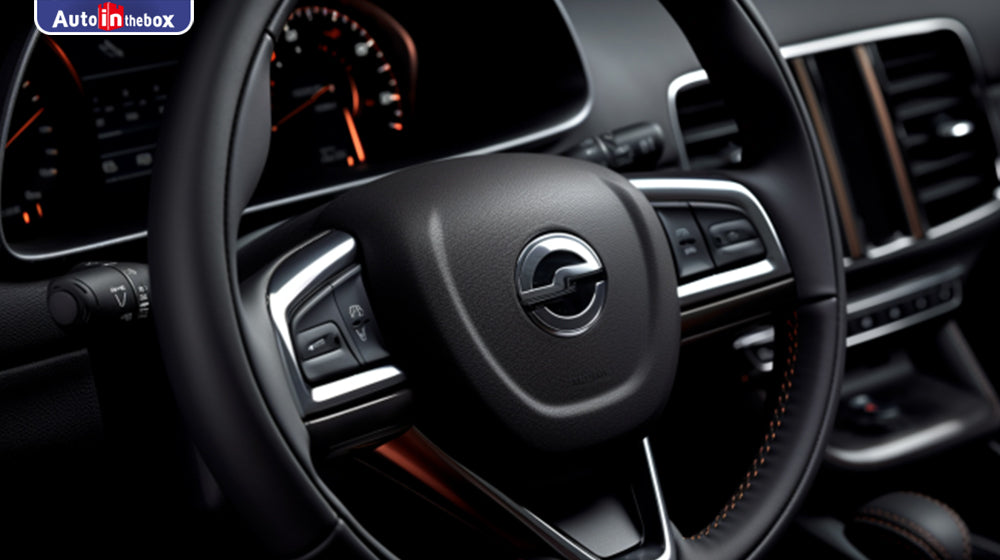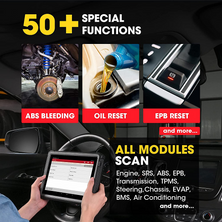
why do shock absorber have oil leaks?
When a shock absorber has oil leaks, it means that the seals or components within the shock absorber are damaged, allowing oil to escape. This issue can have significant implications for the performance and safety of the vehicle. It can lead to reduced shock absorption, compromised handling, and potential damage to other suspension components. Timely detection and repair of oil leaks are crucial to maintaining the shock absorbers' effectiveness and ensuring the vehicle's safety and stability. Regular inspection and maintenance of the shock absorbers are essential preventive measures to promptly identify and address oil leaks.
Recommended 2023 top car diagnostic tool: Autel MK908PRO II,Autel Elite II,Autel Ultra lite,Launch Pro5,Launch pros V
It's important to note that multiple factors can contribute to oil leaks in shock absorbers, and identifying the specific cause requires a thorough inspection by a qualified mechanic or automotive professional.
It is crucial to promptly address shock absorber oil leaks to restore the proper functioning of the suspension system, ensure vehicle safety, and prevent further damage to other components. Regular inspections and maintenance are essential to identify and address oil leaks early on.
Proper repair and replacement of shock absorbers with oil leaks are crucial to restore the vehicle's handling, stability, and overall safety. It is always recommended to consult with professionals to ensure the appropriate measures are taken based on the specific condition of the shock absorbers.
By implementing these preventive measures, you can help prolong the lifespan of your shock absorbers, minimize the risk of oil leaks, and maintain the optimal performance and safety of your vehicle's suspension system.
Oil leaks from shock absorbers can lead to a range of negative consequences. Reduced shock absorption capability can result in a harsh and uncomfortable ride for vehicle occupants. Moreover, compromised handling and stability can affect the vehicle's ability to maneuver safely, especially during sudden maneuvers or emergencies. Uneven tire wear and increased braking distance are additional concerns that can arise from faulty shock absorbers.
Furthermore, oil leaks can accelerate the wear and damage of other suspension components, leading to expensive repairs. The safety risks associated with oil leaks include the increased likelihood of accidents and loss of vehicle control, particularly on uneven or slippery road surfaces.
To mitigate these risks, it is crucial to emphasize the necessity of regular inspections and maintenance for shock absorbers. By conducting routine checks, any oil leaks or damages can be identified early on, allowing for timely repairs or replacements. Adhering to manufacturer-recommended maintenance schedules ensures the optimal functioning of the suspension system and minimizes the likelihood of unexpected failures.
In conclusion, the significance of addressing shock absorber oil leaks lies in preventing potential hazards, maintaining vehicle safety, and preserving the overall performance and stability of the vehicle. Regular inspection and maintenance of shock absorbers are fundamental practices that drivers should prioritize to ensure the safety and longevity of their cars.
Recommended 2023 top car diagnostic tool: Autel MK908PRO II,Autel Elite II,Autel Ultra lite,Launch Pro5,Launch pros V
Causes of Shock Absorber Oil Leaks:
- Damaged Seals: Over time, the seals in the shock absorber can degrade or become worn, leading to oil leaks. This can occur due to prolonged usage, exposure to harsh conditions, or inadequate maintenance.
- Seal Aging: The rubber or elastomeric materials used in the seals can deteriorate with age, losing their flexibility and integrity. As a result, they may develop cracks or gaps, allowing oil to escape from the shock absorber.
- Seal Failure: Excessive pressure or sudden impacts can cause the seals to fail, resulting in oil leakage. This can occur due to aggressive driving, driving on rough terrain, or encountering severe bumps or potholes.
- Piston Rod Damage: If the piston rod, which extends and retracts within the shock absorber, becomes scratched, scored, or bent, it can compromise the integrity of the seals. As a result, the oil may seep past the damaged area and leak out.
- Corrosion and Rust: Corrosion and rust on the external surface of the shock absorber can gradually erode the seals and other components, leading to oil leaks. This is especially common in regions with high humidity or exposure to saltwater.
- Manufacturing Defects: In some cases, manufacturing defects, such as poor assembly or faulty materials, can contribute to oil leaks in the shock absorber. These defects may compromise the effectiveness of the seals or cause other structural weaknesses.
It's important to note that multiple factors can contribute to oil leaks in shock absorbers, and identifying the specific cause requires a thorough inspection by a qualified mechanic or automotive professional.
Impacts and Hazards of Shock Absorber Oil Leaks:
- Reduced Shock Absorption: Oil leaks in shock absorbers can decrease their ability to absorb and dampen vibrations and impacts. This can result in a harsher and less comfortable ride for the vehicle's occupants.
- Compromised Handling and Stability: When shock absorbers are not functioning correctly due to oil leaks, the vehicle's handling and stability can be negatively affected. It may experience excessive body roll, reduced traction, and compromised control, especially during cornering or sudden maneuvers.
- Uneven Tire Wear: Faulty shock absorbers can cause uneven weight distribution on the tires, leading to irregular and accelerated tire wear. This can result in the need for more frequent tire replacements and negatively impact the vehicle's overall performance.
- Increased Braking Distance: Properly functioning shock absorbers help maintain tire contact with the road surface during braking, ensuring optimal braking performance. Oil leaks in the shock absorbers can reduce this contact, resulting in longer braking distances and potentially compromising safety.
- Accelerated Suspension Wear: Oil leaking from shock absorbers can contaminate and damage other suspension components, such as bushings and control arms. This can accelerate their wear and lead to costly repairs or replacements.
- Safety Risks: Oil leaks from shock absorbers can pose safety hazards, especially in emergencies or when driving on uneven or slippery road surfaces. Reduced shock absorption and compromised handling can increase the risk of accidents and loss of vehicle control.
It is crucial to promptly address shock absorber oil leaks to restore the proper functioning of the suspension system, ensure vehicle safety, and prevent further damage to other components. Regular inspections and maintenance are essential to identify and address oil leaks early on.
Repair and Replacement of Shock Absorber with Oil Leaks:
- Inspection: Start by visually inspecting the shock absorber for any signs of oil leaks, such as oil stains or wetness around the seals or shock body. Ensure the vehicle is safely lifted and secure before proceeding.
- Seal Replacement: If the leak is minor and limited to the seals, it may be possible to repair the shock absorber by replacing the damaged seals. This involves disassembling the shock absorber, removing the old seals, and installing new ones. It's essential to use high-quality replacement seals compatible with the specific shock absorber model.
- Piston Rod Repair: In cases where the piston rod is damaged and causing the oil leak, it may need to be repaired or replaced. This requires more extensive work and is usually performed by professional mechanics or specialized shock absorber repair shops.
- Complete Replacement: If the shock absorber is severely damaged, worn out, or beyond repair, it is advisable to replace it entirely. This ensures optimal performance and longevity of the suspension system. When replacing the shock absorber, it is recommended to replace them in pairs (both front and both rear) to maintain balanced suspension characteristics.
- Professional Assistance: Repairing or replacing shock absorbers can be complex and requires specialized knowledge and tools. It is advisable to seek the assistance of a qualified mechanic or automotive professional to ensure proper installation and alignment of the new or repaired shock absorbers.
- Regular Maintenance: After repairing or replacing the shock absorbers, it is essential to maintain a regular maintenance schedule. This includes periodic inspections to check for any signs of oil leaks, damage, or wear. Additionally, follow the manufacturer's recommendations for maintenance intervals and consider replacing shock absorbers proactively after a specific mileage or age.
Proper repair and replacement of shock absorbers with oil leaks are crucial to restore the vehicle's handling, stability, and overall safety. It is always recommended to consult with professionals to ensure the appropriate measures are taken based on the specific condition of the shock absorbers.
Preventive Measures for Shock Absorber Oil Leaks:
- Regular Inspections: Conduct routine visual inspections of the shock absorbers to check for any signs of oil leaks or damage. Look for oil stains, wetness, or excessive dirt buildup around the seals and shock body.
- Scheduled Maintenance: Follow the manufacturer's recommended maintenance schedule for the vehicle, which may include specific intervals for inspecting and servicing the suspension system, including the shock absorbers. Adhering to these guidelines can help detect and address potential issues before they escalate.
- Safe Driving Practices: Practice defensive and cautious driving techniques, especially on rough roads or when encountering potholes or speed bumps. Avoid excessive speeding, aggressive maneuvers, and abrupt stops that can put unnecessary stress on the shock absorbers and increase the risk of oil leaks.
- Avoid Overloading: Do not exceed the recommended weight capacity of the vehicle or overload it with heavy cargo. Excessive weight can strain the shock absorbers, leading to premature wear and potential oil leaks.
- Regular Cleaning: Keep the shock absorbers clean and free from dirt, debris, and corrosive substances. Regularly wash the vehicle, paying attention to the underside and suspension components. This helps prevent the accumulation of contaminants that can contribute to seal degradation and oil leaks.
- Prompt Repairs: If you notice any signs of oil leaks or suspension issues, address them promptly. Delaying repairs can lead to further damage and compromise the performance and safety of the vehicle. Consult with a qualified mechanic or automotive professional for proper diagnosis and repair.
By implementing these preventive measures, you can help prolong the lifespan of your shock absorbers, minimize the risk of oil leaks, and maintain the optimal performance and safety of your vehicle's suspension system.
The shock absorber oil leaks issue is of utmost importance due to its potential hazards and implications. Regular inspection and maintenance of shock absorbers are vital to ensure optimal performance and safety.
Oil leaks from shock absorbers can lead to a range of negative consequences. Reduced shock absorption capability can result in a harsh and uncomfortable ride for vehicle occupants. Moreover, compromised handling and stability can affect the vehicle's ability to maneuver safely, especially during sudden maneuvers or emergencies. Uneven tire wear and increased braking distance are additional concerns that can arise from faulty shock absorbers.
Furthermore, oil leaks can accelerate the wear and damage of other suspension components, leading to expensive repairs. The safety risks associated with oil leaks include the increased likelihood of accidents and loss of vehicle control, particularly on uneven or slippery road surfaces.
To mitigate these risks, it is crucial to emphasize the necessity of regular inspections and maintenance for shock absorbers. By conducting routine checks, any oil leaks or damages can be identified early on, allowing for timely repairs or replacements. Adhering to manufacturer-recommended maintenance schedules ensures the optimal functioning of the suspension system and minimizes the likelihood of unexpected failures.
In conclusion, the significance of addressing shock absorber oil leaks lies in preventing potential hazards, maintaining vehicle safety, and preserving the overall performance and stability of the vehicle. Regular inspection and maintenance of shock absorbers are fundamental practices that drivers should prioritize to ensure the safety and longevity of their cars.
Older Post
 Newer Post
Newer Post

Why Car charging system malfunction?

The steering wheel is unstable? How to fix?










